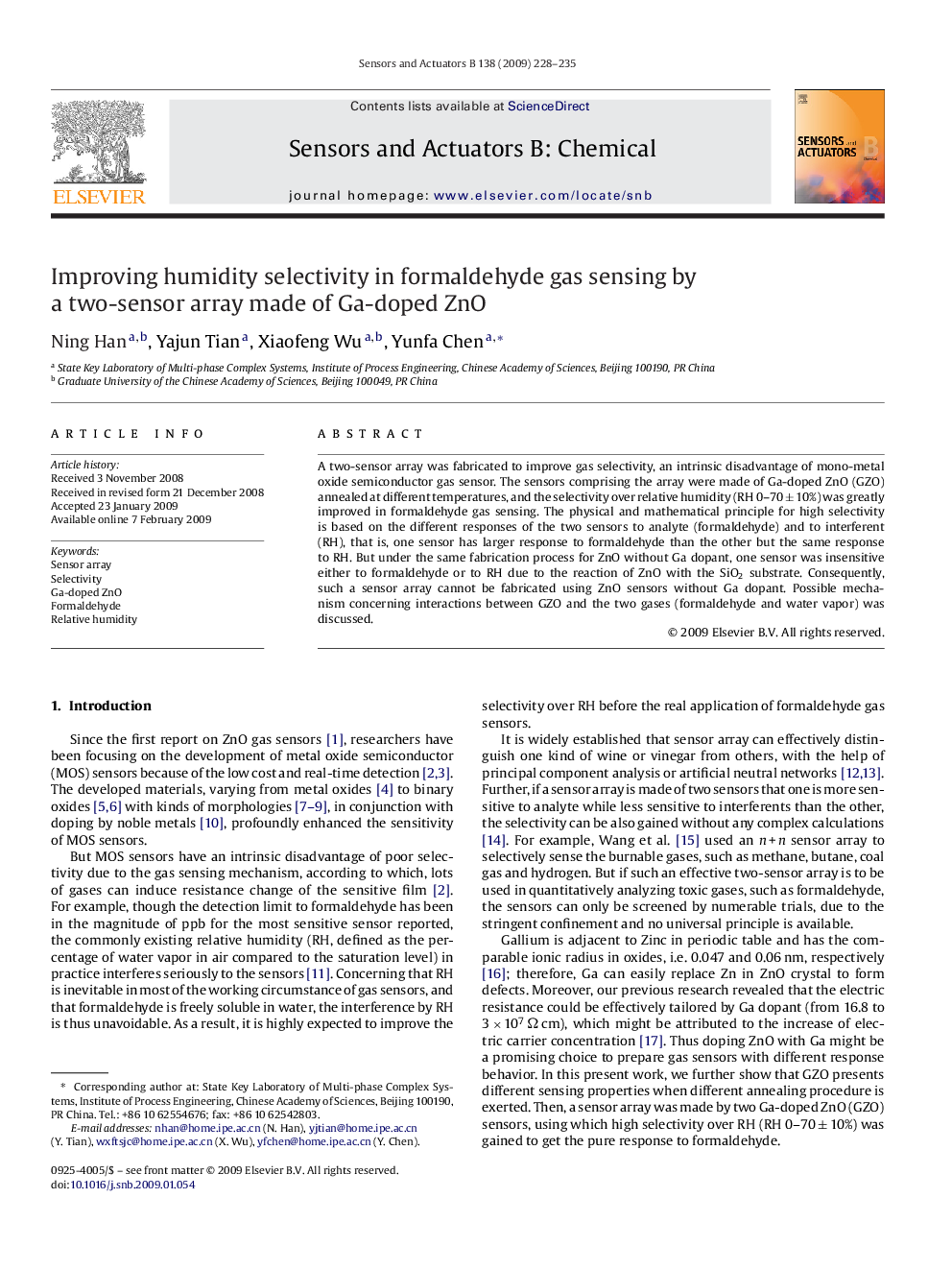| Article ID | Journal | Published Year | Pages | File Type |
|---|---|---|---|---|
| 745589 | Sensors and Actuators B: Chemical | 2009 | 8 Pages |
A two-sensor array was fabricated to improve gas selectivity, an intrinsic disadvantage of mono-metal oxide semiconductor gas sensor. The sensors comprising the array were made of Ga-doped ZnO (GZO) annealed at different temperatures, and the selectivity over relative humidity (RH 0–70 ± 10%) was greatly improved in formaldehyde gas sensing. The physical and mathematical principle for high selectivity is based on the different responses of the two sensors to analyte (formaldehyde) and to interferent (RH), that is, one sensor has larger response to formaldehyde than the other but the same response to RH. But under the same fabrication process for ZnO without Ga dopant, one sensor was insensitive either to formaldehyde or to RH due to the reaction of ZnO with the SiO2 substrate. Consequently, such a sensor array cannot be fabricated using ZnO sensors without Ga dopant. Possible mechanism concerning interactions between GZO and the two gases (formaldehyde and water vapor) was discussed.
